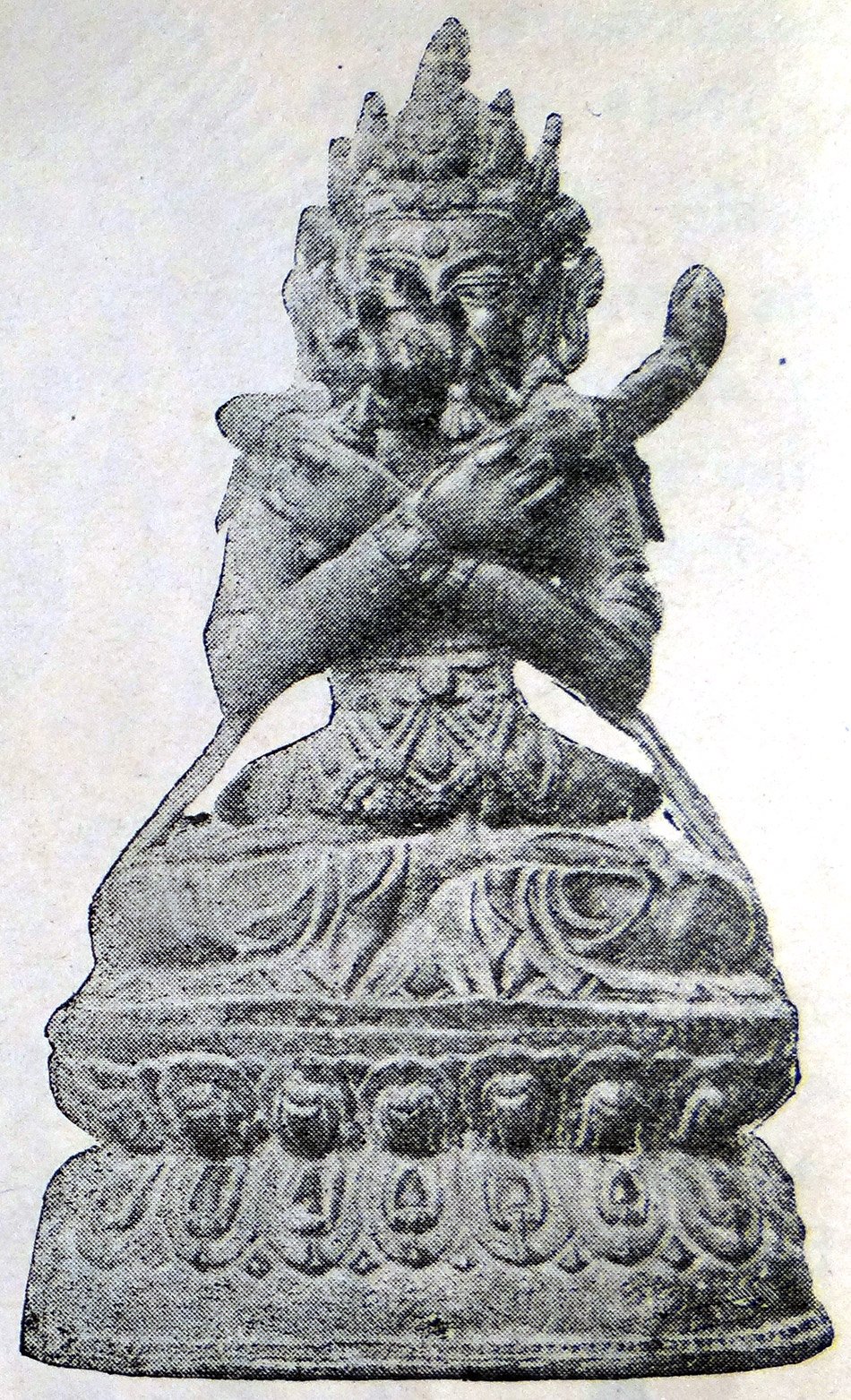The Indian Buddhist Iconography
by Benoytosh Bhattachacharyya | 1958 | 51,392 words | ISBN-10: 8173053138 | ISBN-13: 9788173053139
This page contains an iconography image of Vajradhara Yab-yum (Nepal) and represents figure 14 of the book Indian Buddhist Iconography, based on extracts of the Sadhanamala English translation. These plates and illustrations represent either photographs of sculptures or line-drawing reproductions of paintings or other representations of Buddhist artwork.
Figure 14 - Vajradhara Yab-yum (Nepal)

Figure 14: Vajradhara Yab-yum (Nepal)
In Vajrayāna, Ādibuddha is regarded as the highest deity of the Buddhist pantheon, the originator even of the five Dhyāni Buddhas. When represented in human form, he begets the name of Vajradhara and is conceived in two forms, single and Yab-yum.
In Yab-yum, his form remains the same as when single except that here he is locked in close embrace by his Śakti or the female counterpart whose name according to Getty is Prajñāpāramitā. The Śakti is somewhat smaller in size, is richly dressed and bedecked in ornaments, carrying the Kartri (knife) and the Kapāla (skull cup) in the right and left hands respectively (Figs. 14, 15). In these figures the Kartri is the symbol for the destruction of ignorance, the Kapāla stands for oneness absolute, while the double form Yab-yum represents that the distinction between duality and non-duality is unreal, and the two mix themselves into one as salt mixes in water.
Credits of figure 14 (Vajradhara Yab-yum) goes to Pandits Siddhiharsha, Dharmaharsha and Purnaharsha Vajrācārya of Kathmandu (Nepal), in respect of Nepalese images reproduced.
